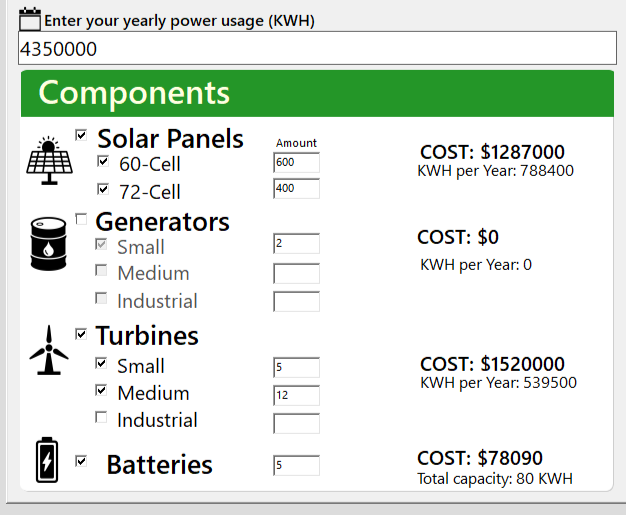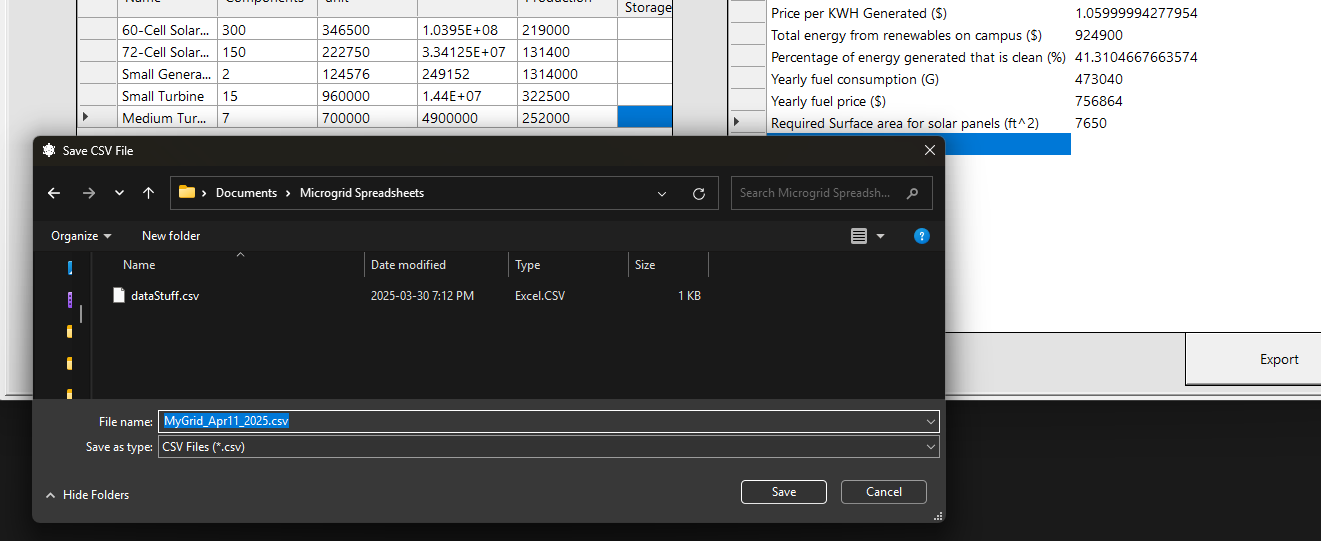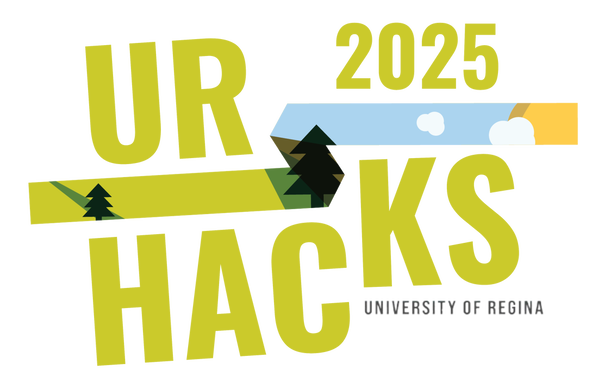Dashboard for designing their Microgrids with a focus on balancing the metrics of cost, energy production, and percentage of renewable energy generated.
Overview
.NET Framework C++ software to serve as a dashboard for an organization to design their own Microgrid with functionality to monitor their power usage & generation. The user enters the annual power consumption of their home or organization, then designs their microgrid with their choice of solar panels, diesel generators, turbines, and batteries. Whenever the user changes any of the input options, the dashboard updates to display the new statistics of their grid.
Functionality
Component Selection
Users choose the components and their quanities, updating their cost and details.
1. Solar Panels: 60-Cell or 72-Cell
2. Diesel Generators: Small, Medium, Industrial
3. Wind Turbines: Small, Medium, Industrial
4. Batteries

Data visualization
A detailed summary of the components selected is displayed on the dashboard panel of the software.
The user is shown the overall cost of the components, the portion of their annual enery-consumption that will be generated by their designed microgrid, and ratio of energy generated that is from renewable sources

Data exportation
Organizations can export detailed Microsoft spreadsheets outlining the components on their grid, their properties, and relevant energy and financial information.

Notable Information
Purpose
1. The idea of this software is to provide a straightforward solution to organizations that are looking to design their own power microgrid. There is a
focus on balancing cost with the environmental impacts of the grid, with further attention being paid to the amount of energy that is being generated on
the microgrid vs. being brought in from an external grid (e.g. the municipality's power grid).
2. The software is a fully-functional prototype that can be easily expanded into other industry standard platforms, such as Microsoft's Power BI.
Background
This project is a result of the first hackathon that was hosted at the University of Regina (URHacks 2025), which was also my first hackathon. The theme was of sustainability was one of many contributions that the UofR Office of Sustainability provided to the event. I offer my thanks to both the, and the U of R's CS Student Society for the wonderful time!

Limitations
1. The version of the CLI .Net Framework that I build the program is limited in its compatibility with external libraries and features.
2. The properties of the components are hardcoded, with all prices being in CAD and reflecting the average costs of the products.
